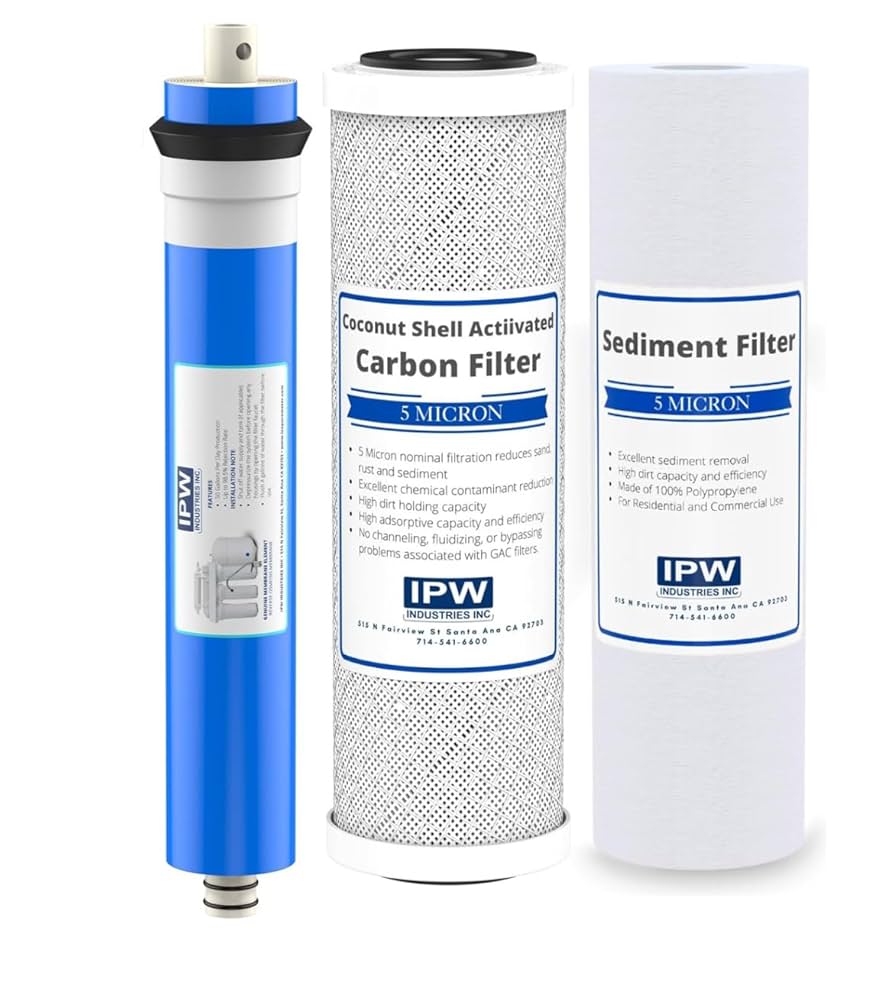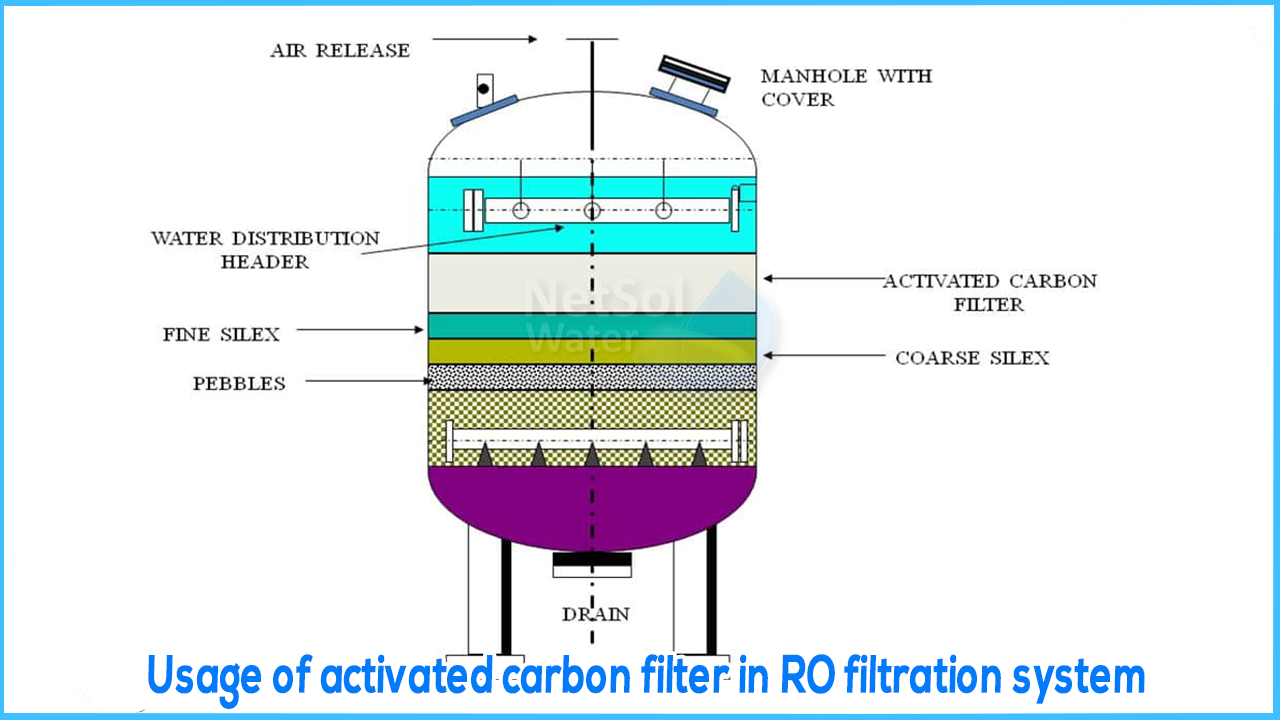Are you concerned about the quality of your drinking water? You’re not alone.
Many people are looking for effective ways to ensure their water is clean and safe. Two popular methods you might come across are RO (Reverse Osmosis) and activated carbon filtration. But which one is right for you? We’ll break down the differences between these two filtration systems.
You’ll discover how each method works, the pros and cons, and what you should consider when making your choice. By the end, you’ll have a clear understanding of which filtration system can best meet your needs. Let’s dive in and find the perfect solution for your water purification!

How Ro Filtration Works
RO filtrationuses a special membrane. This membrane removes tiny particles. Water goes through tiny holes. These holes are smaller than most pollutants. Clean water comes out on one side.
The process starts with pre-filtration. This step removes big particles. It helps protect the RO membrane. Next, water moves to the membrane stage. Here, most contaminants are removed.
Finally, the clean water goes to a storage tank. This water is safe to drink. RO filtration is very effective for cleaning water.
How Activated Carbon Filtration Works
Activated carbon filtrationworks by trapping impurities. It uses a special type of carbon. This carbon has tiny holes. These holes help catch dirt and chemicals. Water passes through the carbon filter.
As water flows, contaminantsstick to the carbon. This process is called adsorption. It is different from absorption. Adsorption means things cling to the surface. Activated carbon is very effective.
This method removes odors and tastes. It also helps with harmful chemicals. Many people use it for clean drinking water. It is a simple and low-cost way to purify water.
Core Differences In Filtration Mechanisms
RO (Reverse Osmosis) and activated carbon are two different filters.
RO uses a membrane to remove tiny particles. This includes salts and heavy metals. It works by pushing water through small holes.
Activated carbon filters use carbon to trap impurities. They mainly remove chemicals and bad smells. This filter improves the taste of water.
RO is good for removing dissolved solids. Activated carbon is better for removing chemicals and odors. Each filter serves a different purpose.
RO systems waste some water during filtering. Activated carbon systems do not waste water. This makes carbon filters more efficient in that way.

Effectiveness In Removing Contaminants
Reverse Osmosis (RO)and activated carbon filtrationare common methods for cleaning water. Each method works differently to remove harmful stuff.
RO uses a special membrane. This membrane blocks small particles and contaminants. It is very effective at removing salts, heavy metals, and bacteria.
Activated carbon filtration uses carbon to trap impurities. It is good at removing chlorine, odors, and some chemicals. This method can improve the taste of water.
Both systems have strengths. RO is better for heavy contaminants. Activated carbon is great for improving taste and smell. Choosing the right method depends on the specific needs.
Impact On Water Taste And Odor
Water taste and odor matter a lot. Many people want clean water. RO and activated carbon filters help with this.
RO filters remove many harmful things. They also take out some good minerals. This can change the taste of water. Some people say it tastes flat.
Activated carbon filters improve taste and smell. They get rid of bad odors. They make water taste fresh and clean.
Both filters have benefits. RO gives safe water. Activated carbon makes it tasty. Choosing the right filter depends on your needs.
Suitability For Different Water Types
Different water types need different filters. RO (Reverse Osmosis)works best for hard water. It removes minerals and salts. This makes the water safe to drink.
Activated carbonfilters are great for chlorineand bad smells. They improve the taste of water. This type works well for city waterwith chemicals.
| Water Type | Best Filter |
|---|---|
| Hard Water | RO Filter |
| City Water | Activated Carbon Filter |
| Well Water | RO and Carbon |
Choose the filter based on your water’s needs. Check your water type first. This helps to find the right solution.
Maintenance And Cost Comparison
RO systemsneed regular maintenance to work well. They need filter changes every 6 to 12 months. This can cost around $50 to $150each time. The filters remove small particles and contaminants. If filters are not changed, the system may fail.
Activated carbon filtersare simpler. They need less maintenance. Change them every 6 to 12 months too. The cost is usually lower, around $30 to $100. They mainly remove bad tastes and odors.
Overall, RO systems cost more to maintain. They need more parts and care. Activated carbon filters are easier and cheaper to manage. Choose based on your needs and budget.
Environmental Considerations
Environmental factorsplay a big role in water filtration. RO systems use a lot of energy. This can lead to higher carbon emissions. Activated carbon filtration uses less energy. It is often more eco-friendly.
Wastewater is another concern. RO systems produce a lot of wastewater. This can harm the environment. Activated carbon filters create less wastewater. They can be a better choice for sustainability.
Both methods need regular maintenance. This helps keep them working well. Filters must be replaced often. Choosing the right system can help protect our planet.
Choosing The Right Filtration System
Choosing a filtration system is important. Two options are RO and activated carbon filters. Both have their benefits.
RO filters remove many impurities. They work well for hard water. But they waste some water during the process.
Activated carbon filters are simple to use. They improve taste and smell. They can remove some chemicals but not all germs.
Think about your water needs. Do you want to remove many impurities? RO might be better. Want to improve taste? Choose activated carbon.
Cost and maintenance also matter. RO systems can be more expensive. Activated carbon filters are often cheaper and easier to maintain.
Evaluate both options carefully. Find the best fit for your home.

Frequently Asked Questions
What Is Ro Filtration?
RO, or Reverse Osmosis filtration, is a process that removes impurities from water. It uses a semi-permeable membrane to eliminate contaminants, including salts and heavy metals. This method is highly effective for purifying drinking water. It ensures that you have safe and clean water for consumption.
How Does Activated Carbon Filtration Work?
Activated carbon filtration works by adsorbing impurities from water. The carbon has a large surface area, which traps contaminants like chlorine, sediment, and volatile organic compounds. This method improves water taste and odor. It’s commonly used in home water filters for its effectiveness and simplicity.
Which Filtration Method Is Better?
The choice between RO and activated carbon depends on your needs. RO is superior for removing a wider range of contaminants. However, activated carbon is effective for improving taste and removing chlorine. Consider water quality and personal preferences when selecting the best option for your home.
Can I Use Both Filtration Methods Together?
Yes, using both RO and activated carbon filtration together is beneficial. This combination enhances overall water quality and safety. RO removes most contaminants, while activated carbon polishes the taste and eliminates any remaining odors. Many modern water filtration systems utilize both methods for optimal performance.
Conclusion
Choosing between RO and activated carbon filtration is important. Each method has its strengths. RO filters remove many impurities but waste some water. Activated carbon filters improve taste and remove odors. Think about your needs and preferences. Consider the water quality in your area.
Both options can help you drink cleaner water. Make an informed choice for better health. Clean water leads to a healthier life. Always prioritize your family’s needs when deciding.
Read More:
- Best Home Water Filtration Units: Top Picks for Clean Water
- Diy Hydroponic Grow System Guide: Cultivate Success
- Mini Hydro System Feasibility Study: Unlocking Eco Solutions
- Chemical Dosing Pump Pricing Guide: Maximize Your Investment
- Diaphragm Pump Cost Comparison: Affordable Options Unveiled
- Hydroelectric Dam Maintenance Cost Analysis: Cutting Costs
- Commercial Water Filtration System Cost: Save Money Today
- Diaphragm Pump Maintenance Tips: Ensure Peak Performance
